scale bar = 1cm.
Candlebark - native (Eucalyptus rubida)
Home....
Menu....
Common name index....
Scientific name index....
Glossary....
Other eucalypts....
Juvenile leaves
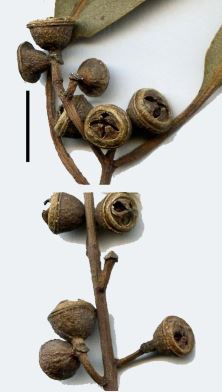
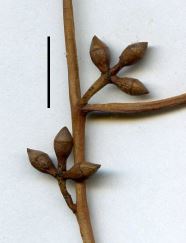
Candlebarks are more common in the forests south of Castlemaine. They are moderately common near Elphinstone and Faraday e.g. along Moon's Lane, Ellerys Road and Pollards Road. The white trunks contrast with the rough-barked eucalypts.
Recognise Candlebarks by:
- the showy smooth bark. The bark peels tends to fall off in flakes, rather than ribbons.
- the juvenile leaves are bluish, round, stalkless and in opposite pairs
- the buds and fruit, which are in threes.
In some of the wetter forests, Candlebark and Manna Gum grow together. Both can grow to tall forest trees. Some of the differences are:
- Candlebarks have whiter bark, and Manna Gums often have greener bark
- the bark of Manna Gums fall in ribbons, and bark is often festooned from the branches
- the juvenile leave of Manna Gum are green, narrow and in stalkless pairs. The juvenile leaves of Candlebark are bluish, round and in stalkless pairs.
R: Buds and fruit. The fruit were originally in groups of 3, before some fell off.
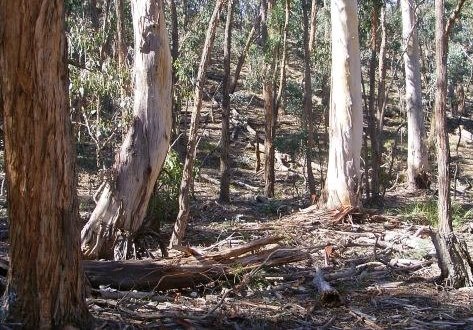
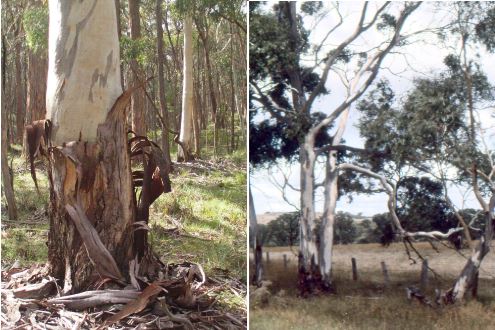
1: The white trunks of Candlebark contrast with the box and stringybarks. Wewak Track. 2: Loop Track. 3: Pollards Road.
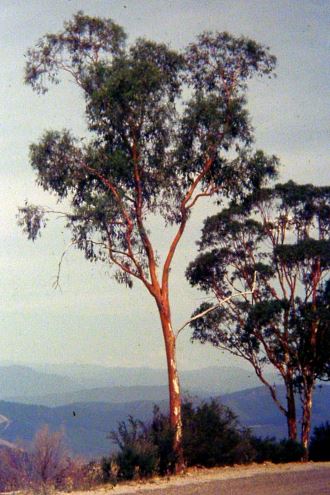
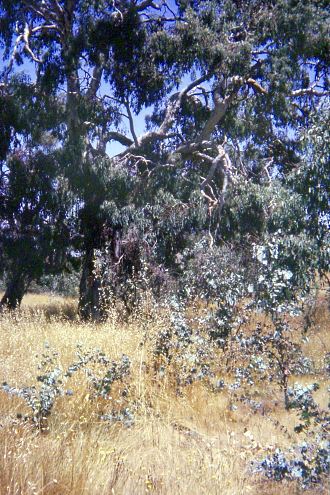
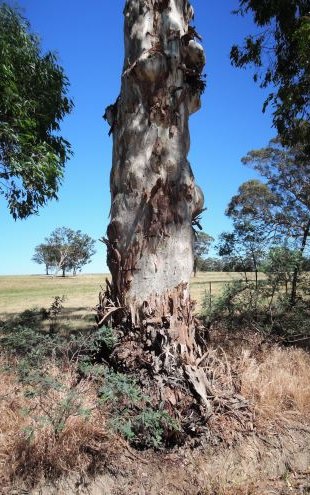
8: Roadside tree. Overlooking Jindabyne. The name rubida means becoming red, or reddish. 9: Candlebark at Cathkin. The round, bluish juvenile leaves make identification of this tree easy. 10: Candlebark at Elphinstone.


1: The white trunks of Candlebark contrast with the box and stringybarks. Wewak Track. 2: Loop Track. 3: Pollards Road.



8: Roadside tree. Overlooking Jindabyne. The name rubida means becoming red, or reddish. 9: Candlebark at Cathkin. The round, bluish juvenile leaves make identification of this tree easy. 10: Candlebark at Elphinstone.